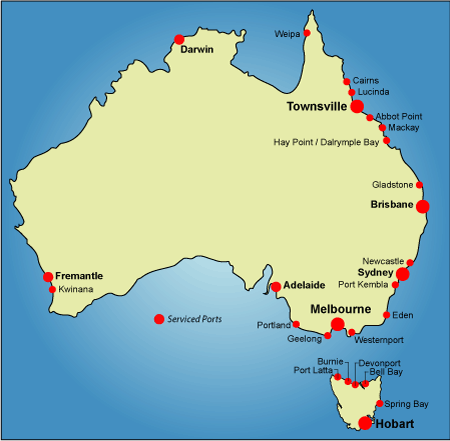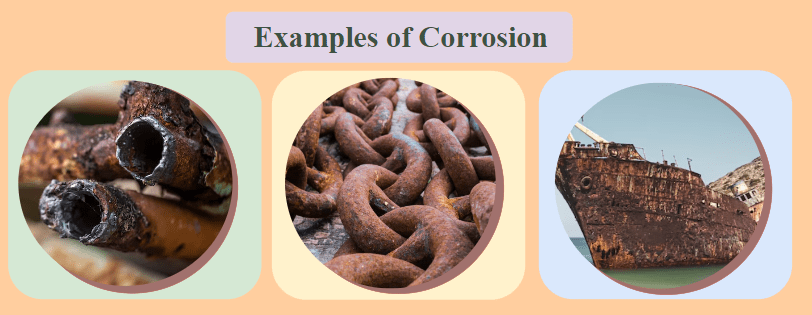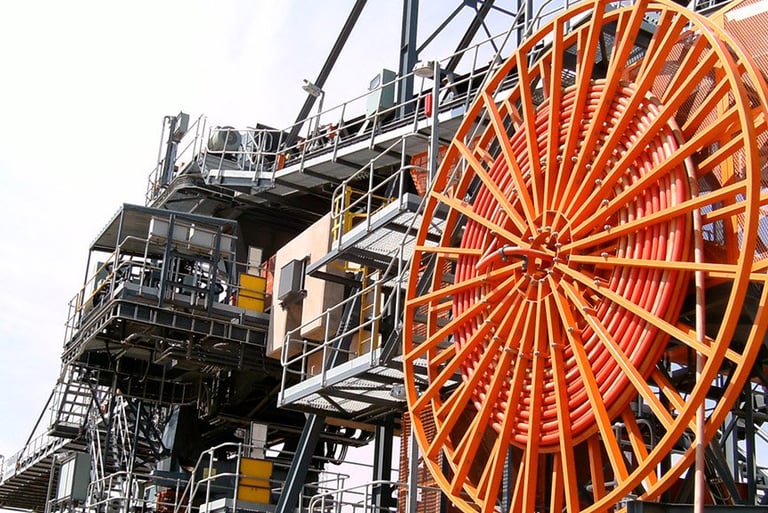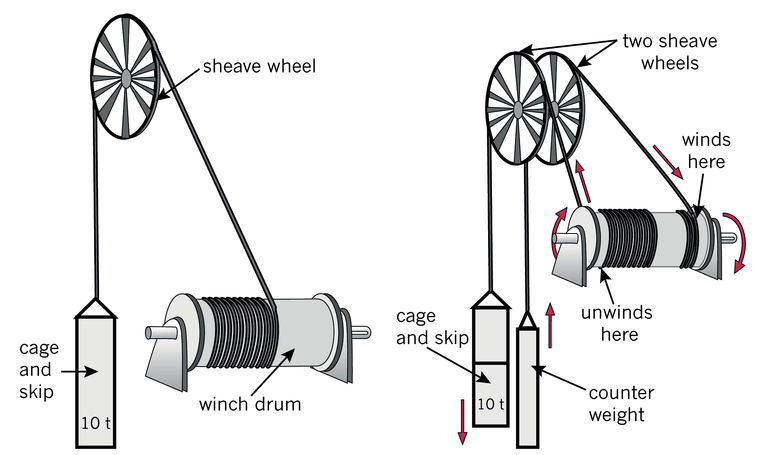📞+86 153 7530 2641 📧 hongjing.Wang@feichuncables.com

How to Properly Maintain Port Machinery and Port Cables in a Highly Corrosive Environment at the Seaside?
Discover practical maintenance guidelines for port machinery and cables in corrosive seaside environments. Learn about salt spray protection, anti-corrosion treatments, cable selection, and maintenance strategies to extend equipment life and ensure safe, efficient port operations in Australian coastal conditions.
hongjing.Wang@Feichun
7/8/20259 min read
Introduction
Australia's extensive coastline hosts some of the world's most significant port facilities, from the massive iron ore terminals of Port Hedland to the sophisticated container operations at Port Botany. These critical infrastructure assets face a relentless battle against one of nature's most aggressive adversaries: the highly corrosive maritime environment. The combination of salt-laden sea breezes, persistent moisture, and intense UV radiation creates conditions that can rapidly degrade even the most robust equipment.
The seaport environment presents unique challenges that go far beyond typical industrial settings. Salt spray can travel several kilometres inland, coating everything in a fine layer of corrosive sodium chloride. The constant presence of moisture, whether from sea spray, rain, or high humidity, accelerates corrosion processes and creates ideal conditions for electrical faults. Meanwhile, Australia's intense sunlight adds another layer of complexity, causing material degradation and thermal stress that can compromise equipment integrity.
Port machinery and cables represent the backbone of modern maritime operations. These systems must function reliably around the clock, handling enormous loads while exposed to harsh environmental conditions. A single failure can halt operations, delay vessel schedules, and cost millions in lost productivity. The economic impact extends beyond immediate operational costs to include potential safety risks, environmental consequences, and damage to Australia's reputation as a reliable trading partner.
The challenge for port operators is developing maintenance strategies that can effectively combat these environmental threats while maintaining operational efficiency. This requires a comprehensive understanding of corrosion mechanisms, appropriate material selection, and systematic maintenance approaches tailored to the unique demands of the maritime environment.




Main Challenges of Highly Corrosive Environments
The seaside environment presents a complex array of corrosive threats that work in combination to accelerate equipment degradation. Understanding these mechanisms is crucial for developing effective maintenance strategies.
Salt Spray Corrosion: Salt spray represents perhaps the most pervasive threat to port equipment. The fine mist of seawater creates a continuous coating of sodium chloride on all exposed surfaces. This salt acts as a catalyst for electrochemical corrosion, particularly affecting metal components and cable sheaths. The process is accelerated by the presence of moisture, creating a cycle where salt attracts water from the atmosphere, maintaining the corrosive environment even during dry periods.
Metal components such as crane structures, cable drums, and mechanical assemblies are particularly vulnerable. The corrosion process begins almost immediately upon exposure, with visible rust appearing within hours on unprotected steel surfaces. Cable sheaths, even those designed for marine applications, can suffer degradation where salt penetrates through minor scratches or imperfections in the protective coating.
Australian ports like those in Western Australia face additional challenges due to their exposure to both the Indian Ocean's salt spray and the region's extreme temperature variations. The combination of high daytime temperatures and cool nights creates thermal cycling that can accelerate the penetration of salt into protective coatings.
High Humidity and Sandstorms: Australia's coastal regions experience significant humidity fluctuations, with levels often exceeding 80% during certain seasons. This persistent moisture creates ideal conditions for electrical short circuits and mechanical component seizure. Electrical contacts and connections are particularly vulnerable, as moisture can bridge insulation gaps and create conductive paths that lead to equipment failure.
Sandstorms, common in ports along Australia's northern and western coasts, compound these problems by introducing abrasive particles that can damage cable sheaths and mechanical seals. The combination of sand and moisture creates a grinding paste that accelerates wear on moving parts and can compromise the integrity of protective coatings.
Ultraviolet Radiation: Australia's intense UV radiation poses significant challenges for cable and equipment maintenance. The country's high UV index, particularly in northern regions, can cause rapid degradation of polymer-based materials. Cable sheaths, protective covers, and insulation materials are particularly susceptible to UV damage, which manifests as cracking, brittleness, and loss of protective properties.
The degradation process is accelerated by the combination of UV exposure and thermal cycling. During hot days, cable sheaths can reach temperatures exceeding 70°C, followed by rapid cooling at night. This thermal stress, combined with UV degradation, can lead to premature failure of protective systems.
Accumulation of Corrosive Deposits: Over time, salt spray combines with dust, industrial emissions, and other airborne particles to form corrosive deposits on equipment surfaces. These deposits are particularly problematic because they retain moisture and create localised corrosion cells that can cause pitting and stress corrosion cracking.
Cable drums and transmission systems are especially vulnerable to deposit accumulation. The deposits can interfere with proper cable winding, cause uneven wear patterns, and create points where corrosion can initiate and propagate. Regular cleaning is essential, but the deposits can be difficult to remove once they have hardened and bonded to equipment surfaces.
Key Maintenance Measures for Port Machinery and Equipment
Effective maintenance in the corrosive port environment requires a multi-layered approach that addresses both prevention and remediation. The following strategies have proven effective in Australian port operations:
Surface Anti-Corrosion Treatment: The first line of defence against corrosion involves proper surface treatments applied during manufacturing and maintained throughout the equipment's operational life. Anti-corrosion coatings represent the most common and effective protection method. Modern coating systems typically employ multiple layers, beginning with a zinc-rich primer that provides cathodic protection to the underlying steel.
Hot-dip galvanising offers superior protection for structural components, creating a zinc coating that sacrificially protects the underlying steel. This process has proven particularly effective in Australian ports, where the combination of salt spray and UV exposure can rapidly degrade painted surfaces. The galvanised coating typically provides 15-20 years of protection in marine environments, significantly longer than conventional paint systems.
Regular inspection and maintenance of protective coatings is crucial. Port operators should establish systematic inspection schedules that identify coating degradation before it progresses to substrate corrosion. Early intervention through localised repainting and rust removal can extend coating life significantly and prevent the need for major refurbishment.
Maintenance of Structural Parts and Rotating Systems: Mechanical components require particular attention in the corrosive port environment. Lubrication systems must be designed to cope with salt contamination and moisture ingress. Regular lubrication of exposed mechanical bearings and slide rails should use marine-grade lubricants that resist water washout and provide enhanced corrosion protection.
The sealing and wear characteristics of lifting and rotating mechanisms require constant monitoring. Salt deposits can cause accelerated wear and interference with proper operation. Regular inspection should focus on identifying early signs of wear, checking seal integrity, and ensuring proper clearances are maintained.
Preventive maintenance schedules should be adjusted based on environmental conditions. During periods of high salt spray or after storms, increased inspection frequency may be necessary to identify and address problems before they lead to equipment failure.
Control System Protection: Electrical control systems represent one of the most vulnerable components in port equipment. The control box must be equipped with appropriate environmental protection, typically IP66 rating or higher, to prevent moisture and salt ingress. However, protection ratings alone are insufficient; the design must also consider thermal management to prevent condensation inside enclosures.
Electrical interfaces require special attention, with anti-corrosion connectors and effective sealing measures essential for reliable operation. Traditional connector designs may be inadequate for the marine environment, requiring upgraded materials and sealing systems. Regular inspection of electrical connections should include checking for signs of corrosion, overheating, or moisture ingress.
Port Cable Protection and Maintenance Strategies
Port cables face unique challenges in the corrosive maritime environment, requiring specialised approaches to material selection, installation, and maintenance.
Material Selection Stage:
The foundation of effective cable protection begins with appropriate material selection. Corrosion-resistant high-performance cables designed specifically for marine applications offer superior protection against environmental threats. PUR (polyurethane) sheaths provide excellent resistance to salt spray, UV radiation, and mechanical abrasion while maintaining flexibility in temperature extremes.
LSZH (Low Smoke Zero Halogen) cables offer additional safety benefits in port environments where fire risk is a concern. These cables produce minimal smoke and no halogenic gases when exposed to fire, reducing risks to personnel and equipment. Maritime certification standards such as NEK606 and DNV provide assurance that cables meet rigorous testing requirements for marine environments.
Advanced cable designs incorporate Kevlar reinforcement for enhanced mechanical strength and UV-resistant compounds in the sheath formulation. These features are particularly important in Australian ports where cables may be exposed to both mechanical stress and intense solar radiation.
Protection Design During Installation:
Proper installation design is crucial for cable longevity in corrosive environments. Cable routing should utilise corrosion-resistant bridges and closed cable ducts that provide physical protection while preventing moisture accumulation. Stainless steel or aluminium cable trays offer superior corrosion resistance compared to traditional galvanised steel systems.
Installation planning must carefully consider drainage and ventilation to prevent long-term water accumulation. Cables should be routed away from areas prone to standing water and physical wear points where mechanical damage might compromise protective sheaths.
Daily Inspection and Maintenance Points:
Regular inspection of cable installations should focus on identifying early signs of sheath damage, cracking, or ageing. Visual inspection should be supplemented by more detailed examination of high-stress areas where cables enter equipment or change direction.
Maintaining cable dryness is essential for preventing electrical faults and corrosion. Air drying systems or UV treatment can be effective for removing moisture from cable installations. However, care must be taken to ensure that UV treatment doesn't cause additional degradation of cable sheaths.
Reel system inspection represents a critical maintenance activity. Tension control systems must be regularly calibrated to prevent excessive stress on cables during winding and unwinding operations. Anti-winding devices and guide wheel maintenance ensure smooth cable operation and prevent mechanical damage.
Reinforcement Measures in Special Environments:
High-salt environments require additional protective measures beyond standard cable design. Cable protection chains and adjustable suspension systems can provide mechanical protection while allowing for thermal expansion and contraction.
Regular rinsing of cable outer surfaces helps prevent salt deposition and accumulation. However, this must be done carefully to avoid forcing moisture into cable terminations or damaged areas. Fresh water rinsing followed by thorough drying is most effective for removing salt deposits.




Frequently Asked Questions About Port Cable Maintenance
Q: How often should port cables be inspected in a corrosive environment? A: In highly corrosive seaside environments, visual inspections should be conducted monthly, with more detailed examinations quarterly. After severe weather events or periods of intense salt spray, immediate inspection is recommended. Critical cables supporting essential operations may require weekly inspection during high-risk periods.
Q: What are the early warning signs of cable degradation in marine environments? A: Key indicators include surface chalking or colour change in cable sheaths, small cracks or brittleness in the outer jacket, corrosion at cable terminations, and evidence of moisture ingress such as condensation in junction boxes. Any change in cable flexibility or the appearance of white salt deposits on the surface should trigger immediate investigation.
Q: Can damaged cable sheaths be repaired, or must the entire cable be replaced? A: Minor sheath damage can often be repaired using marine-grade repair compounds and heat-shrink sleeves, provided the damage hasn't compromised the conductor insulation. However, extensive damage or repeated repairs may indicate the need for replacement. The decision should consider the cable's age, criticality, and the extent of damage.
Q: How do you prevent moisture ingress in cable terminations? A: Proper termination techniques include using marine-grade terminals with integrated sealing, applying appropriate sealants, and ensuring adequate drainage. Regular inspection and re-sealing of terminations is essential, typically annually or after exposure to severe weather conditions.
Q: What's the best approach for cable storage in port environments? A: Cable storage should be in covered, ventilated areas with protection from direct sunlight and salt spray. Cables should be stored on reels or in coils that prevent kinking, with protective covers to prevent moisture accumulation. Indoor storage with climate control is preferred for valuable spare cables.
Q: How does Australian UV exposure affect cable lifespan compared to other regions? A: Australia's high UV index significantly accelerates cable degradation compared to many other regions. UV-resistant cable formulations are essential, and expected service life may be 20-30% shorter than in temperate climates. Regular sheath inspection and the use of UV-protective covers can help mitigate these effects.
Q: What maintenance records should be kept for port cables? A: Comprehensive records should include installation dates, inspection results, maintenance activities, environmental conditions, and any failures or repairs. Digital systems with photographic documentation can help track degradation patterns and optimise maintenance schedules.
Conclusion
Maintaining port machinery and cables in Australia's challenging coastal environment requires a comprehensive, systematic approach that addresses both prevention and remediation. The combination of salt spray, UV radiation, humidity, and mechanical stress creates one of the most demanding operating environments for electrical and mechanical equipment.
Successful maintenance programs recognise that seaside port maintenance is fundamentally a systematic project requiring coordinated attention to material selection, installation practices, and ongoing care. Selecting high-quality cables and equipment represents only the first step in achieving reliable long-term operation. Regular maintenance activities, environmental adaptation measures, and proactive monitoring are equally critical for success.
The development of periodic maintenance plans, tailored to specific environmental conditions and equipment requirements, provides the framework for effective asset management. These plans should be developed in cooperation with cable and equipment suppliers who understand the unique challenges of the marine environment and can provide technical guidance for optimising maintenance strategies.
Australian ports that have implemented comprehensive maintenance programs have demonstrated significant improvements in equipment reliability, reduced downtime, and lower total cost of ownership. The investment in proper maintenance pays dividends through extended equipment life, improved safety, and enhanced operational efficiency.
For port operators facing these challenges, the key is to view maintenance not as a cost but as an investment in operational excellence. By implementing the strategies outlined in this article and maintaining close cooperation with equipment suppliers, Australian ports can continue to operate safely and efficiently despite the harsh coastal environment.
If you're seeking high-quality cables designed specifically for demanding port environments, we encourage you to contact our technical team. Our marine-certified cables and comprehensive support services can help ensure your port operations maintain peak performance in Australia's challenging coastal conditions.
How to Reach Us
Get in Touch
SiteMap
Product Catalogue
Reeling Cable
Festoon Cable
Shore Power Cable




Scan to add us on WeChat
